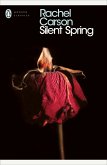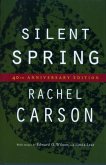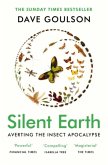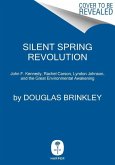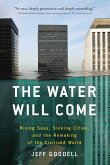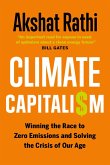Schade – dieser Artikel ist leider ausverkauft. Sobald wir wissen, ob und wann der Artikel wieder verfügbar ist, informieren wir Sie an dieser Stelle.
- Broschiertes Buch
- Merkliste
- Auf die Merkliste
- Bewerten Bewerten
- Teilen
- Produkt teilen
- Produkterinnerung
- Produkterinnerung
This collection of documents, the first of its kind, traces shifting attitudes toward DDT and pesticides in general through a variety of sources: excerpts from scientific studies and government reports, advertisements from industry journals, articles from popular magazines, and the famous "Fable for Tomorrow" from Rachel Carson's Silent Spring.
Andere Kunden interessierten sich auch für
![Silent Spring Silent Spring]() Rachel CarsonSilent Spring9,99 €
Rachel CarsonSilent Spring9,99 €![Silent Spring Silent Spring]() Rachel CarsonSilent Spring26,99 €
Rachel CarsonSilent Spring26,99 €![Silent Earth Silent Earth]() Dave GoulsonSilent Earth10,99 €
Dave GoulsonSilent Earth10,99 €![Silent Spring Revolution Silent Spring Revolution]() Douglas BrinkleySilent Spring Revolution34,99 €
Douglas BrinkleySilent Spring Revolution34,99 €![The Water Will Come The Water Will Come]() Jeff GoodellThe Water Will Come14,99 €
Jeff GoodellThe Water Will Come14,99 €![The Fukushima 2011 Disaster The Fukushima 2011 Disaster]() Ronald EislerThe Fukushima 2011 Disaster147,99 €
Ronald EislerThe Fukushima 2011 Disaster147,99 €![Climate Capitalism Climate Capitalism]() Akshat RathiClimate Capitalism25,99 €
Akshat RathiClimate Capitalism25,99 €-
This collection of documents, the first of its kind, traces shifting attitudes toward DDT and pesticides in general through a variety of sources: excerpts from scientific studies and government reports, advertisements from industry journals, articles from popular magazines, and the famous "Fable for Tomorrow" from Rachel Carson's Silent Spring.
Produktdetails
- Produktdetails
- Verlag: University of Washington Press
- Seitenzahl: 160
- Erscheinungstermin: 20. August 2008
- Englisch
- Abmessung: 221mm x 150mm x 13mm
- Gewicht: 227g
- ISBN-13: 9780295988344
- ISBN-10: 0295988347
- Artikelnr.: 23605527
- Herstellerkennzeichnung
- Libri GmbH
- Europaallee 1
- 36244 Bad Hersfeld
- gpsr@libri.de
- Verlag: University of Washington Press
- Seitenzahl: 160
- Erscheinungstermin: 20. August 2008
- Englisch
- Abmessung: 221mm x 150mm x 13mm
- Gewicht: 227g
- ISBN-13: 9780295988344
- ISBN-10: 0295988347
- Artikelnr.: 23605527
- Herstellerkennzeichnung
- Libri GmbH
- Europaallee 1
- 36244 Bad Hersfeld
- gpsr@libri.de
Thomas Dunlap. Foreword by William Cronon
Foreword by William Cronon
Preface and Acknowledgments
Introduction
Part 1: BACKGROUND
Views of Nature
1. Stephen A. Forbes, "The Ecological Foundations of Applied Entomology"
2. Leland O. Howard, "The War against Insects"
-Pre-DDT Pesticides and DDT's Use in World War II
3. Paul Neal et al., "A Study of the Effects of Lead Arsenate Exposure on
Orchardists and Consumers of Sprayed Fruit"
4. Paul Neal et al., "Toxicity and Potential Dangers of Aerosols, Mists,
and Dusting Powders Containing DDT"
Part 2: DDT'S BRIGHT PROMISE AND NEGLECTED PROBLEMS (1942-1958)
DDT as Miracle Chemical
5. Brigadier General James Stevens Simmons, "How Magic is DDT?"
6. "Aerosol Insecticides"
7. Clay Lyle, "Achievements and Possibilities in Pest Eradication"
-Early Warnings
8. Paul B. Dunbar, "The Food and Drug Administration Looks at Insecticides"
9. Clarence Cottam and Elmer Higgins, "DDT and Its Effect on Fish and
Wildlife"
Part 3: RISING CONCERN ABOUT NEW PROBLEMS
DDT, Food Chains, and Wildlife
10. Roy J. Barker, "Notes on Some Ecological Effects of DDT Sprayed on
Elms"
11. Editorial from Bird Study
12. Derek A. Ratcliffe, "The Status of the Peregrine in Great Britain"
13. Robert Rudd, Pesticides and the Living Landscape
14. Thomas R. Dunlap, Interview with Joseph J. Hickey
15. Robert S. Strother, "Backfire in the War against Insects"
Part 4: THE STORM OVER SILENT SPRING
Public Alarm
16. Morton Mintz, "'Heroine' of FDA Keeps Bad Drug Off Market"
17. Rachel Carson, "A Fable for Tomorrow"
-Reactions
18. President's Science Advisory Committee, Use of Pesticides
19. Robert H. White-Stevens, "Communications Create Understanding"
20. Edwin Diamond, "The Myth of the 'Pesticide Menace'"
21. Robert Gillette, "DDT: Its Days are Numbered, Except Perhaps in Pepper
Fields"
Part 5: DDT AND MALARIA
22. Thomas Sowell, "Intended Consequences"
23. Thomas R. Hawkins, "Rereading Silent Spring"
24. May Berenbaum, "If Malaria's the Problem, DDT's Not the Only Answer"
Notes on Further Reading
Credits
Index
Preface and Acknowledgments
Introduction
Part 1: BACKGROUND
Views of Nature
1. Stephen A. Forbes, "The Ecological Foundations of Applied Entomology"
2. Leland O. Howard, "The War against Insects"
-Pre-DDT Pesticides and DDT's Use in World War II
3. Paul Neal et al., "A Study of the Effects of Lead Arsenate Exposure on
Orchardists and Consumers of Sprayed Fruit"
4. Paul Neal et al., "Toxicity and Potential Dangers of Aerosols, Mists,
and Dusting Powders Containing DDT"
Part 2: DDT'S BRIGHT PROMISE AND NEGLECTED PROBLEMS (1942-1958)
DDT as Miracle Chemical
5. Brigadier General James Stevens Simmons, "How Magic is DDT?"
6. "Aerosol Insecticides"
7. Clay Lyle, "Achievements and Possibilities in Pest Eradication"
-Early Warnings
8. Paul B. Dunbar, "The Food and Drug Administration Looks at Insecticides"
9. Clarence Cottam and Elmer Higgins, "DDT and Its Effect on Fish and
Wildlife"
Part 3: RISING CONCERN ABOUT NEW PROBLEMS
DDT, Food Chains, and Wildlife
10. Roy J. Barker, "Notes on Some Ecological Effects of DDT Sprayed on
Elms"
11. Editorial from Bird Study
12. Derek A. Ratcliffe, "The Status of the Peregrine in Great Britain"
13. Robert Rudd, Pesticides and the Living Landscape
14. Thomas R. Dunlap, Interview with Joseph J. Hickey
15. Robert S. Strother, "Backfire in the War against Insects"
Part 4: THE STORM OVER SILENT SPRING
Public Alarm
16. Morton Mintz, "'Heroine' of FDA Keeps Bad Drug Off Market"
17. Rachel Carson, "A Fable for Tomorrow"
-Reactions
18. President's Science Advisory Committee, Use of Pesticides
19. Robert H. White-Stevens, "Communications Create Understanding"
20. Edwin Diamond, "The Myth of the 'Pesticide Menace'"
21. Robert Gillette, "DDT: Its Days are Numbered, Except Perhaps in Pepper
Fields"
Part 5: DDT AND MALARIA
22. Thomas Sowell, "Intended Consequences"
23. Thomas R. Hawkins, "Rereading Silent Spring"
24. May Berenbaum, "If Malaria's the Problem, DDT's Not the Only Answer"
Notes on Further Reading
Credits
Index
Foreword by William Cronon
Preface and Acknowledgments
Introduction
Part 1: BACKGROUND
Views of Nature
1. Stephen A. Forbes, "The Ecological Foundations of Applied Entomology"
2. Leland O. Howard, "The War against Insects"
-Pre-DDT Pesticides and DDT's Use in World War II
3. Paul Neal et al., "A Study of the Effects of Lead Arsenate Exposure on
Orchardists and Consumers of Sprayed Fruit"
4. Paul Neal et al., "Toxicity and Potential Dangers of Aerosols, Mists,
and Dusting Powders Containing DDT"
Part 2: DDT'S BRIGHT PROMISE AND NEGLECTED PROBLEMS (1942-1958)
DDT as Miracle Chemical
5. Brigadier General James Stevens Simmons, "How Magic is DDT?"
6. "Aerosol Insecticides"
7. Clay Lyle, "Achievements and Possibilities in Pest Eradication"
-Early Warnings
8. Paul B. Dunbar, "The Food and Drug Administration Looks at Insecticides"
9. Clarence Cottam and Elmer Higgins, "DDT and Its Effect on Fish and
Wildlife"
Part 3: RISING CONCERN ABOUT NEW PROBLEMS
DDT, Food Chains, and Wildlife
10. Roy J. Barker, "Notes on Some Ecological Effects of DDT Sprayed on
Elms"
11. Editorial from Bird Study
12. Derek A. Ratcliffe, "The Status of the Peregrine in Great Britain"
13. Robert Rudd, Pesticides and the Living Landscape
14. Thomas R. Dunlap, Interview with Joseph J. Hickey
15. Robert S. Strother, "Backfire in the War against Insects"
Part 4: THE STORM OVER SILENT SPRING
Public Alarm
16. Morton Mintz, "'Heroine' of FDA Keeps Bad Drug Off Market"
17. Rachel Carson, "A Fable for Tomorrow"
-Reactions
18. President's Science Advisory Committee, Use of Pesticides
19. Robert H. White-Stevens, "Communications Create Understanding"
20. Edwin Diamond, "The Myth of the 'Pesticide Menace'"
21. Robert Gillette, "DDT: Its Days are Numbered, Except Perhaps in Pepper
Fields"
Part 5: DDT AND MALARIA
22. Thomas Sowell, "Intended Consequences"
23. Thomas R. Hawkins, "Rereading Silent Spring"
24. May Berenbaum, "If Malaria's the Problem, DDT's Not the Only Answer"
Notes on Further Reading
Credits
Index
Preface and Acknowledgments
Introduction
Part 1: BACKGROUND
Views of Nature
1. Stephen A. Forbes, "The Ecological Foundations of Applied Entomology"
2. Leland O. Howard, "The War against Insects"
-Pre-DDT Pesticides and DDT's Use in World War II
3. Paul Neal et al., "A Study of the Effects of Lead Arsenate Exposure on
Orchardists and Consumers of Sprayed Fruit"
4. Paul Neal et al., "Toxicity and Potential Dangers of Aerosols, Mists,
and Dusting Powders Containing DDT"
Part 2: DDT'S BRIGHT PROMISE AND NEGLECTED PROBLEMS (1942-1958)
DDT as Miracle Chemical
5. Brigadier General James Stevens Simmons, "How Magic is DDT?"
6. "Aerosol Insecticides"
7. Clay Lyle, "Achievements and Possibilities in Pest Eradication"
-Early Warnings
8. Paul B. Dunbar, "The Food and Drug Administration Looks at Insecticides"
9. Clarence Cottam and Elmer Higgins, "DDT and Its Effect on Fish and
Wildlife"
Part 3: RISING CONCERN ABOUT NEW PROBLEMS
DDT, Food Chains, and Wildlife
10. Roy J. Barker, "Notes on Some Ecological Effects of DDT Sprayed on
Elms"
11. Editorial from Bird Study
12. Derek A. Ratcliffe, "The Status of the Peregrine in Great Britain"
13. Robert Rudd, Pesticides and the Living Landscape
14. Thomas R. Dunlap, Interview with Joseph J. Hickey
15. Robert S. Strother, "Backfire in the War against Insects"
Part 4: THE STORM OVER SILENT SPRING
Public Alarm
16. Morton Mintz, "'Heroine' of FDA Keeps Bad Drug Off Market"
17. Rachel Carson, "A Fable for Tomorrow"
-Reactions
18. President's Science Advisory Committee, Use of Pesticides
19. Robert H. White-Stevens, "Communications Create Understanding"
20. Edwin Diamond, "The Myth of the 'Pesticide Menace'"
21. Robert Gillette, "DDT: Its Days are Numbered, Except Perhaps in Pepper
Fields"
Part 5: DDT AND MALARIA
22. Thomas Sowell, "Intended Consequences"
23. Thomas R. Hawkins, "Rereading Silent Spring"
24. May Berenbaum, "If Malaria's the Problem, DDT's Not the Only Answer"
Notes on Further Reading
Credits
Index


